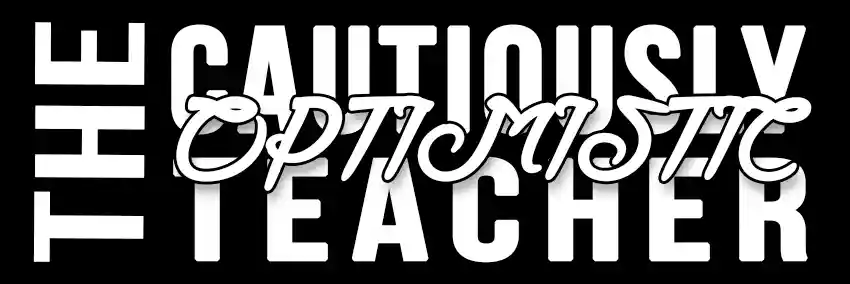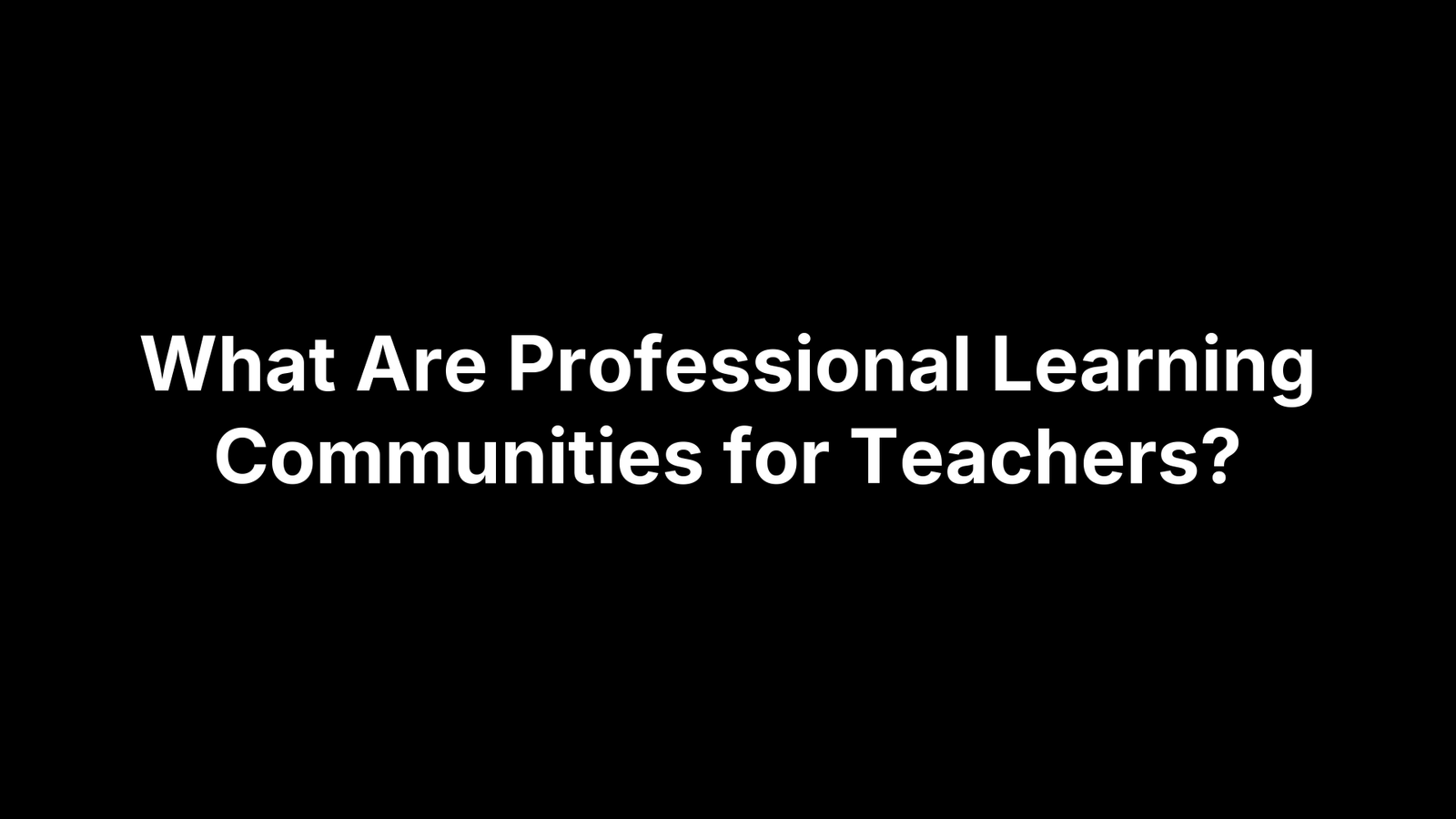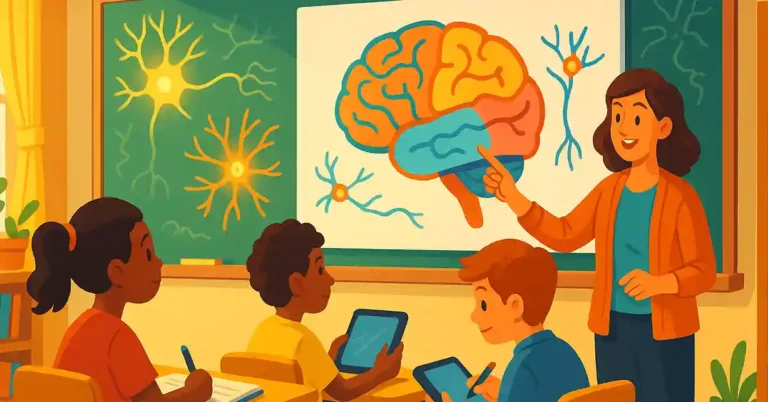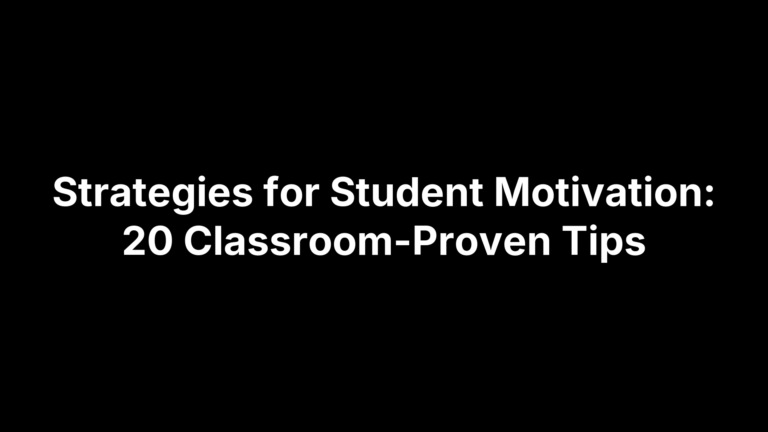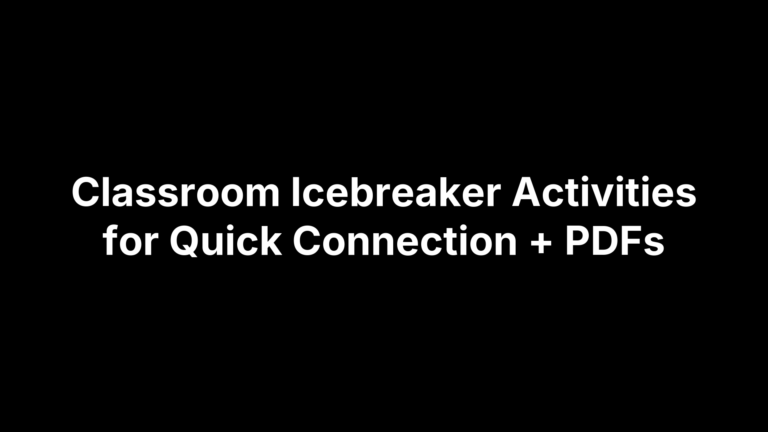What Are Professional Learning Communities for Teachers?
A Professional Learning Community (PLC) is an ongoing, collaborative approach to professional development where educators work in teams to refine instruction and boost student results. Unlike one-off workshops that fade the moment the clock runs out, PLCs are teacher-driven, inquiry-based, and sustained over time, giving staff a structured space to analyze data, share strategies, and hold one another accountable. The payoff is tangible: higher achievement for students, reduced isolation for teachers, and a culture that values collective growth over individual silos.
This article unpacks what PLCs look like in practice, outlines steps to start or join one, and offers proven tactics for keeping momentum long after the first meeting. But first, a shared vocabulary is essential. Understanding the foundations and key terms behind the concept will make every subsequent strategy clearer and more actionable—so let’s ground ourselves in a solid definition before moving to logistics that drive real classroom improvements.
Defining Professional Learning Communities (PLCs)
At its heart, a Professional Learning Community is both a mindset and a framework: teachers purposefully band together, examine evidence of learning, and act on what they discover—all in a repeating cycle of improvement. Three ideas lock together to make that happen:
- Collaboration – educators plan, teach, and problem-solve as a team.
- Inquiry – they ask focused questions, test strategies, and study the results.
- Continuous improvement – the work never stops at “good enough.”
“Community” doesn’t have to mean an entire faculty meeting in the library every Wednesday. A PLC can be a grade-level trio, a cross-district virtual book club, or an AP Biology Slack channel. What matters is a shared goal and a structured process—not the zip code or platform.
Core Principles Every PLC Shares
DuFour’s Four Critical Questions keep conversations laser-focused:
- What do we want students to learn?
- How will we know they learned it?
- How will we respond when they haven’t?
- How will we extend learning when they already know it?
To answer them, effective PLCs establish norms: trust first, equal airtime, and evidence over opinion. Those guardrails turn “just another meeting” into a results-oriented work session where teachers own both the problems and the solutions.
PLCs vs. Traditional Professional Development
| Feature | Traditional PD | PLC |
|---|---|---|
| Delivery | One-time lecture by outside expert | Ongoing, peer-led sessions |
| Focus | General theory | Immediate classroom issues |
| Follow-up | Rare | Built-in data checks |
| Cost | High speaker fees | Minimal—time and shared resources |
| Teacher agency | Passive recipient | Active designer |
Picture a literacy workshop that ends at 3 p.m. versus a literacy PLC that meets bi-weekly, crafts common rubrics, and tracks reading data until every student hits proficiency—the latter sticks.
Common PLC Models Educators Encounter
- DuFour Model / “Professional Learning Communities at Work”: emphasizes the four questions and frequent common assessments; ideal for whole-school initiatives.
- Lesson Study: teachers jointly plan, teach, and debrief a research lesson—perfect for fine-tuning instructional moves.
- Critical Friends Groups: protocols for giving warm and cool feedback on dilemmas; strong for cultivating reflective practice.
- Data Teams: tight cycles of assessment analysis and intervention; best when the priority is closing specific achievement gaps.
Whether you adopt one model or blend several, the non-negotiable is collective responsibility for student success.
Why Professional Learning Communities Matter for Teachers and Students
Research keeps confirming what many educators feel in their gut: when teachers collaborate with purpose, students thrive and teachers stick around. A 2023 meta-analysis covering 42 school districts found that campuses with strong PLC structures posted reading and math gains of 6–9 percentile points over comparable schools working in isolation. At the same time, teacher turnover dropped by almost a quarter.
PLCs also tackle everyday frustrations—working late to reinvent lessons, wondering if new strategies are paying off, and feeling like the only adult in the room who cares about a struggling learner. Working in a community replaces guesswork with shared evidence and shared responsibility, making professional growth less lonely and far more efficient.
Fast facts often cited by district leaders:
- 87 % of teachers in active PLCs report “greater confidence” in instructional decisions.
- Schools with weekly PLC time are 2× more likely to exceed state growth targets.
- New-teacher attrition drops by 15 % when mentoring happens inside a PLC rather than in standalone meetings.
Impact on Teacher Growth and Instructional Practice
Professional learning communities for teachers create built-in coaching without the hefty consulting bill. Peer observations, co-planning sessions, and quick feedback loops shorten the time between trying a strategy and refining it. Picture a first-year teacher whose classroom referrals fall from 10 per month to 4 after colleagues model a restorative-conversation protocol. PLCs also surface informal leadership roles—data captain, tech tutor—that let teachers flex expertise and influence schoolwide practices.
Improved Student Outcomes and Equity
When educators agree on essential standards and craft common assessments, gaps show up early and resources can be targeted fast. A fifth-grade math PLC in one district cut its subgroup achievement gap from 18 % to 7 % simply by aligning exit tickets and sharing intervention materials. Coordinated progress monitoring keeps high fliers challenged while ensuring struggling students receive tiered support before problems snowball.
Building a Culture of Collaboration and Trust
Regular, structured dialogue shifts the mindset from “my students” to “our students.” Celebrating small wins, using protocols like “Plus/Delta,” and openly examining mistakes normalizes risk-taking and continuous improvement. Over time, staff meetings become calmer, problem-solving gets quicker, and new initiatives face less resistance because the habits of collaboration are already baked into the culture.
Key Components and Stages of an Effective PLC
Every high-functioning professional learning community for teachers follows the same heartbeat: set a shared target, inspect evidence, act, and then loop back to see what changed. Think of it as a classroom-sized version of the scientific method. Below are the pieces that keep that cycle moving and the practical steps to replicate it with your own team.
Shared Vision and SMART Goals
Momentum starts with a vision everyone can finish in the same sentence. From there, the team writes one or two SMART goals (Specific, Measurable, Achievable, Relevant, Time-bound) that anchor every agenda item.
By May 1, 2026, 85% of Grade 7 students will score at least 3 of 4 on the common argumentative writing rubric.
Tight goals steer the conversation away from “interesting” ideas toward the work that delivers results.
Data-Driven Inquiry and Common Assessments
Once the target is fixed, teachers design or select common formative assessments—exit tickets, quizzes, or performance tasks—that generate apples-to-apples evidence. A quick protocol many PLCs favor:
- Sort student work by proficiency levels.
- Ask, “What do students who met the goal do that others don’t?”
- Identify one instructional tweak to try before the next assessment.
Because everyone looks at the same data set, discussions stay concrete and free from guesswork.
Reflective Dialogue and Action Research
Structured talk turns raw numbers into instructional insight. Protocols like the “5 Whys” or a 10-minute “Tuning” ensure every voice is heard and ideas stay solution-oriented. Teams often craft mini action-research cycles:
- Question: Will graphic organizers raise evidence scores in essays?
- Plan: Use organizers in Periods 1-3 for two weeks.
- Collect: Compare rubric criterion #2 before/after.
- Share: Debrief at the next PLC.
Continuous Cycles of Improvement (Plan–Do–Study–Act)
The Plan–Do–Study–Act (PDSA) loop keeps the PLC honest about follow-through.
| Stage | Sample Activity | Owner | Evidence |
|---|---|---|---|
| Plan | Draft reteach mini-lesson | Facilitator | Lesson outline |
| Do | Deliver lesson next week | All teachers | Class notes |
| Study | Analyze quiz results | Data analyst | Score spreadsheet |
| Act | Adjust pacing guide | Team | Updated doc |
Small, fast iterations like these prevent initiative fatigue and build a culture where improvement is simply “how we do business.”
Setting Up or Joining a Professional Learning Community
Whether you’re launching from scratch or hopping into an existing team, the ingredients of successful professional learning communities for teachers are remarkably consistent: a clear purpose, the right people, smart routines, dependable tools, and time that’s protected—not borrowed. Use the mini–action plan below as a road map and adapt each step to your campus context.
Identifying Focus and Membership
- Zero in on one high-leverage goal (e.g., “increase 5th-grade fractions mastery to 80%”).
- Assemble 4–8 educators whose daily work touches that goal—grade-level peers, interventionists, even a special-education teacher for multiple perspectives.
- Confirm shared commitment with a quick norms agreement before the first meeting.
Structuring Meetings and Assigning Roles
- Warm-up (celebrations/concerns)
- Data review
- Plan instructional moves
- Reflect & set next steps
Rotate these roles every quarter to build collective capacity:
- Facilitator keeps the agenda moving.
- Recorder captures decisions and uploads minutes.
- Timekeeper guards the clock.
- Data analyst preps visuals so discussion starts at interpretation, not collection.
Choosing Tools and Platforms for Collaboration
In-person teams often lean on chart paper and sticky notes; virtual PLCs thrive with shared drives and threaded chat. Popular, low-cost options:
- Google Workspace for real-time docs and a shared data sheet.
- Microsoft Teams or Slack channels for ongoing dialogue.
- Zoom breakout rooms for protocol-based discussions.
Pro tip: store agendas, artifacts, and norms in one cloud folder to cut down on “version hunting.”
Securing Administrative Support and Scheduled Time
Pitch the PLC as a direct accelerator of campus improvement goals. Bring:
- The SMART goal, meeting calendar, and role rotation plan.
- An estimated ROI—“If we close the reading gap by 10%, state ranking moves up one quartile.”
Request dedicated time inside contract hours: weekly 45-minute blocks or half of each PD day. Principals are more likely to protect what’s already mapped, budget-neutral, and aligned to student success.
Strategies for Active Participation and Sustainability
Even the best-designed professional learning communities for teachers can stall if meetings feel aimless or if workloads pile up. The tactics below keep energy high, focus sharp, and progress visible so your PLC remains a driver of improvement rather than another item on an overcrowded calendar.
Establishing Norms and Protocols for Productive Collaboration
Draft 4–6 concise norms—“assume positive intent,” “honor start and end times,” “challenge ideas, not people”—and revisit them every quarter. Pair those agreements with quick protocols such as a 60-second “Round Robin” for equal voice or a “Parking Lot” chart for off-topic issues. Clear guardrails prevent side conversations and keep each minute mission-critical.
Using Evidence and Data in Every Discussion
Adopt the 90/10 rule: 90 % of meeting time centers on student evidence, 10 % on logistics. Kick off each session with one data artifact—exit-ticket spreadsheet, student work sample, heat map—and pose a single question like, “What patterns demand action?” Consistent, evidence-anchored dialogue ensures decisions stay grounded in reality, not anecdotes.
Leveraging Technology for Asynchronous Collaboration
A “flipped PLC” model trims meeting length while boosting depth. Team members review shared Google Sheets, leave comments on lesson videos, or annotate a common assessment rubric before gathering. Platforms such as Slack threads or Microsoft Teams channels capture thinking in real time, giving absent colleagues an easy on-ramp and archiving institutional knowledge.
Troubleshooting Common Challenges
| Pain Point | Quick Fix | Long-Term Move |
|---|---|---|
| Unequal participation | Use a timed round; assign rotating facilitator | Provide peer-coaching on discussion skills |
| Time constraints | Send pre-reads; cap live agenda to two items | Negotiate protected PLC blocks in the master schedule |
| Data overwhelm | Focus on one metric per cycle | Create a shared dashboard with color-coded trends |
| Resistance to change | Highlight early wins; celebrate publicly | Embed PLC goals in evaluation and school-improvement plans |
Regularly monitor these hotspots, adjust strategies, and your PLC will keep momentum long after the kickoff enthusiasm fades.
Inspiring Examples of PLCs in Action
Abstract descriptions are helpful, but quick snapshots show how professional learning communities for teachers spark change in everyday schools.
Grade-Level and Subject-Specific Teams
Four third-grade teachers met weekly, shared math exit tickets, swapped manipulatives, and lifted number-sense proficiency from 62 % to 83 % in one quarter.
Cross-Disciplinary or Vertical Articulation PLCs
A vertical team spanning grades 6–12 aligned evidence-based writing rubrics, so students saw consistent expectations and argumentative scores climbed each successive year.
Online Global PLCs and Social Media Communities
Through #MathChat on X, educators on five continents co-designed Desmos tasks, proving a virtual PLC can erase geography without sacrificing rigor.
Action Research PLC Snapshot
High-school biology teachers posed an action-research question on cell models, tested 3-D printing, and presented statistically significant gains at a district showcase.
Frequently Asked Questions about PLCs
Need the nutshell version? The FAQ below tackles the questions teachers ask most.
What Are the Four Main Questions Guiding a PLC?
DuFour’s four anchors: 1) What must students learn? 2) How will we know? 3) How will we respond if they don’t? 4) How will we enrich when they do? Together they center every agenda.
How Often Should PLCs Meet to Be Effective?
Plan weekly or bi-weekly 45–60-minute sessions; regularity—and protected time—beats marathon meetings. Carve it into the master schedule.
Do PLCs Require a Formal Leader?
No. Rotate facilitation; an instructional coach can advise, yet authority stays distributed. Shared leadership deepens buy-in.
How Is Success Measured in a PLC?
Check common assessment gains, fewer remediation referrals, teacher self-efficacy surveys, and walkthrough evidence. Review progress each semester.
Moving Forward Together
Professional learning communities for teachers aren’t another initiative to juggle; they’re a simple, repeatable habit that turns collective expertise into concrete student gains. When educators meet regularly, examine real evidence, and act on what they discover, classrooms get calmer, instruction sharpens, and kids learn more—period.
Pick one next step while the ideas are fresh: invite three colleagues to draft a SMART goal, pilot a common exit ticket next week, or carve out 45 minutes on the calendar for your first PLC huddle. Small moves, done consistently, create the biggest ripples.
Need ready-to-use agendas, data trackers, or facilitation tips? Explore our growing toolkit at The Cautiously Optimistic Teacher and sign up for the weekly newsletter to keep the momentum alive.
